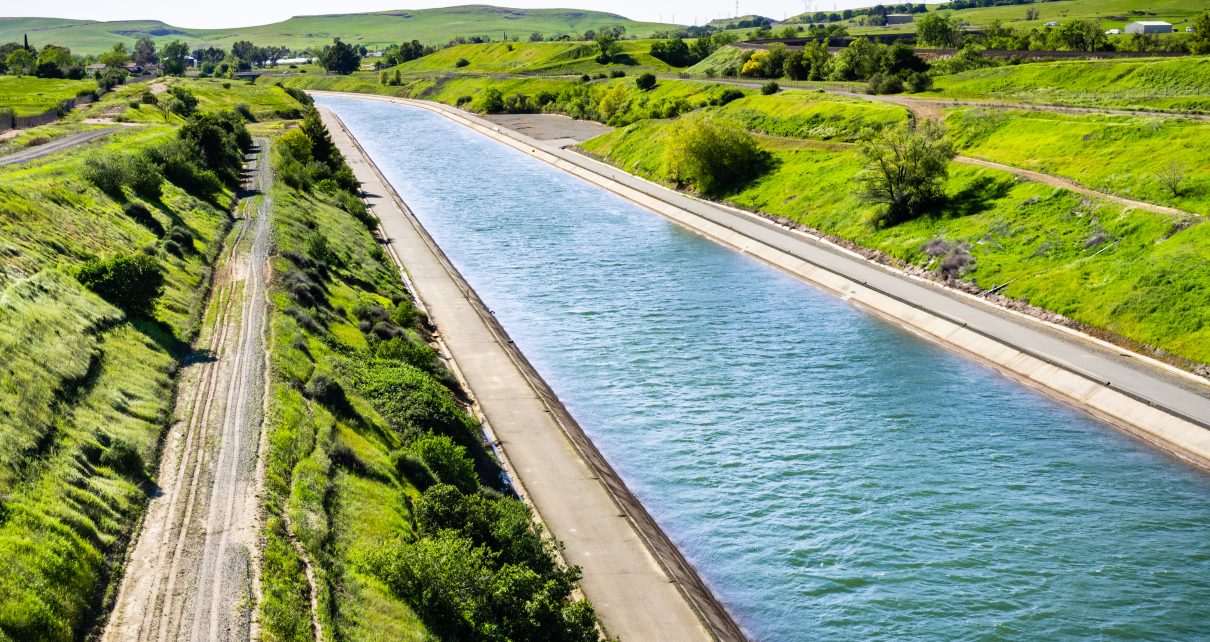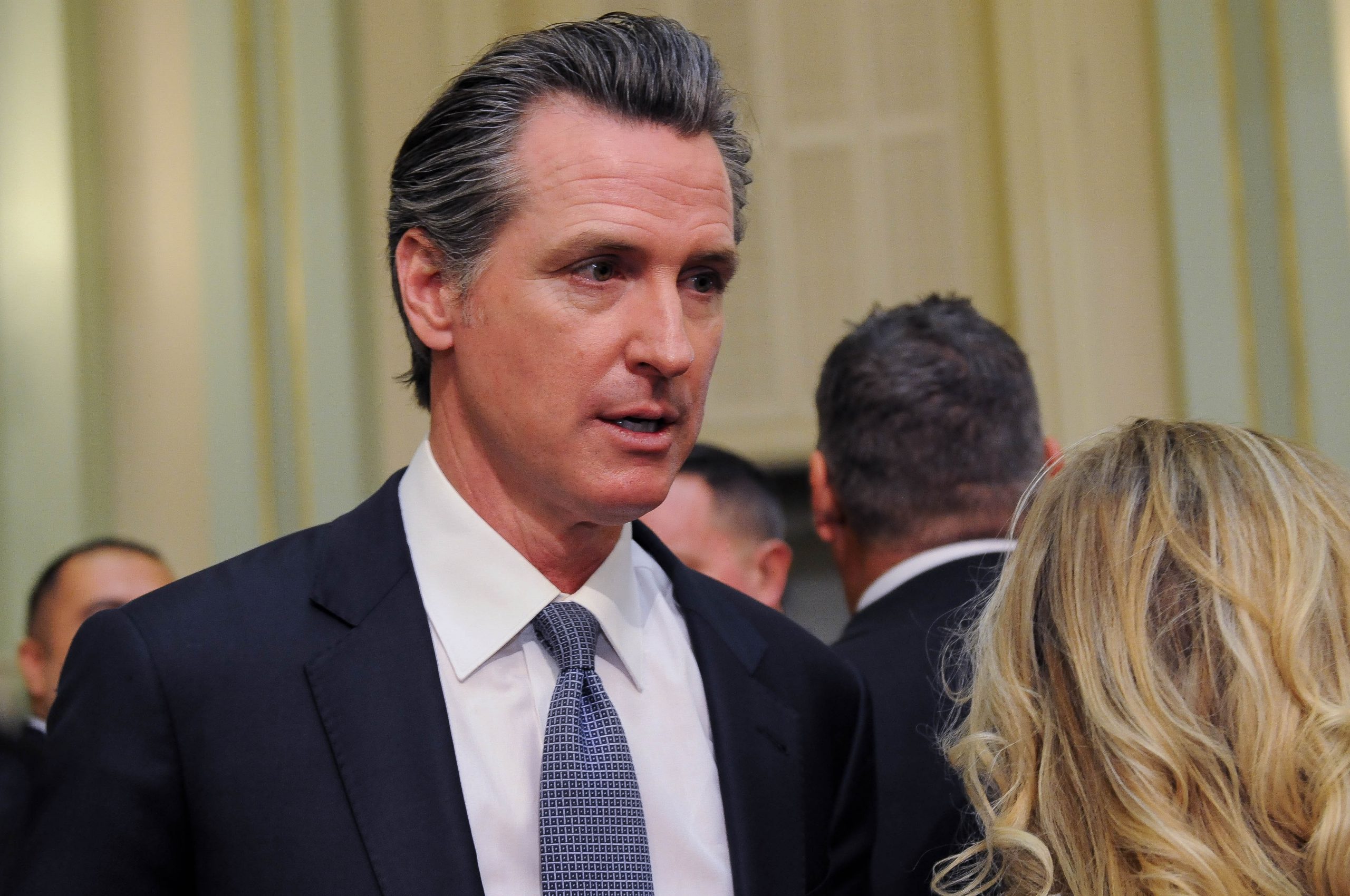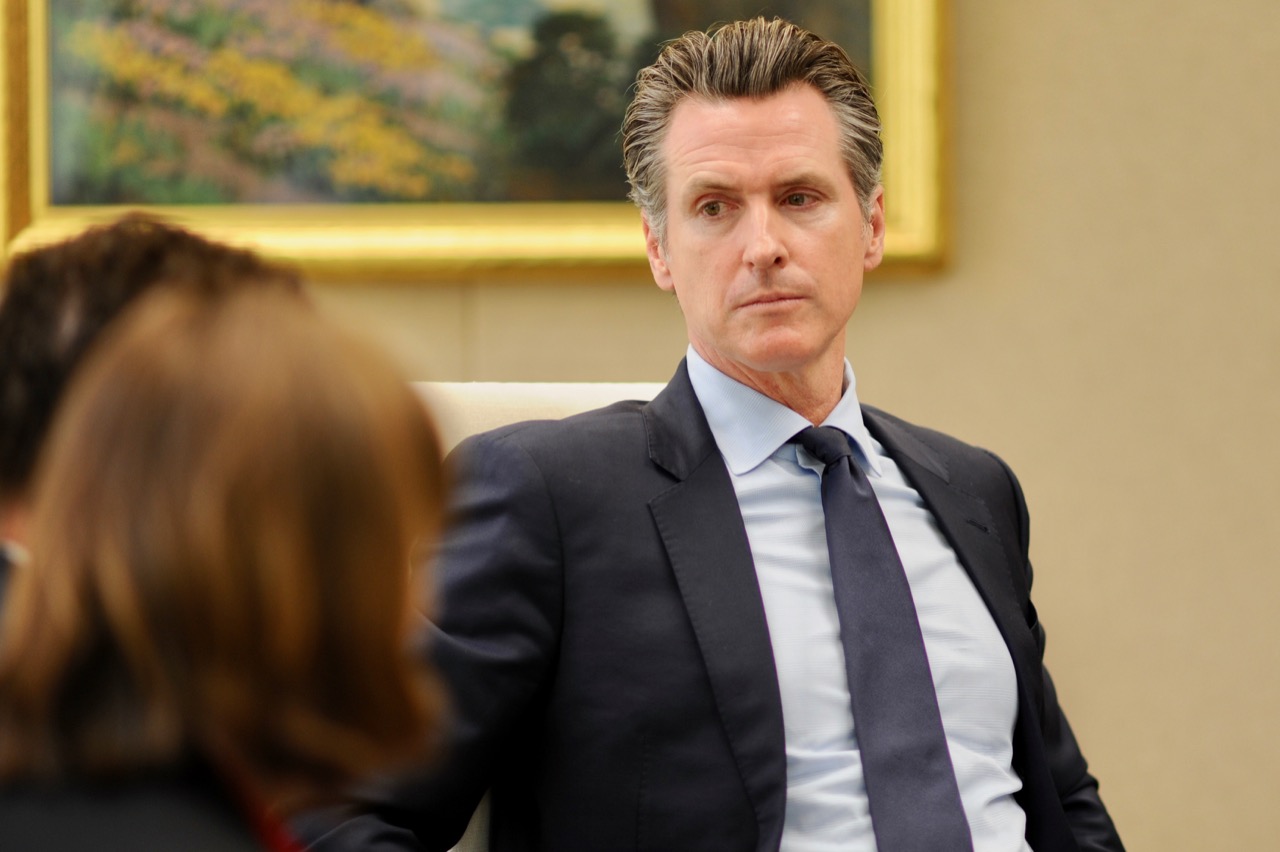
The Thermalito Power Canal in Oroville, Butte County. (Photo: Sundry Photography/Shutterstock)
Questions About Water for Governor Newsom
We may hope Gov. Newsom is prepared to go out on a limb to answer them all in the affirmative
By Edward Ring, August 24, 2022 3:30 am
Borrowing a page from the More Water Now campaign, which unsuccessfully attempted earlier this year to qualify a water funding initiative for the November 2022 ballot, Governor Newsom announced a new water supply strategy on August 11.
Perhaps with the presidency in mind, or perhaps because he really means it, Newsom’s remarks were surprisingly accommodating towards those of us who have been fighting for more water supply infrastructure.
For example, Newsom said “We have a renewed sense of urgency to address this issue head on, but we do so from a multiplicity of perspectives and ways. Not just from a scarcity mindset – so much of the water conversation in this state has been about conservation – but that is a relatively small component of the overall strategy we are introducing here today. What we are focusing on is creating more water, moving away from a scarcity mindset to one of abundance.”
This shift in emphasis, if it is genuine, cannot come a moment too soon. Over the past decade, total water diversions for cities, farms, and to maintain ecosystems totaled 75 million acre feet per year. Every primary source for all this water is imperiled.
California’s reservoirs, most of which are in-stream, cannot be used to store water from early season storms, such as the deluge that fell in December 2021. If early season storms are allowed to fill these reservoirs, should a late-season storm hit the state, there would be no reservoir capacity left to buffer the runoff and prevent flooding. But during droughts, when an adequate Sierra snowpack fails to develop in order to deliver snowmelt well into the summer months, and no late-season rainstorms inundate the state, summer arrives and the reservoirs are empty.
Groundwater pumping, averaging 18.7 million acre-feet per year, has withdrawn water faster than it can be replenished with percolating runoff. To restore aquifers as a sustainable source of water storage and supply, from now on total annual withdrawals are going to need to be less than the annual amount of natural recharge.
The water California imports via the Colorado Aqueduct, nearly 5 million acre-feet per year, depends on Colorado River runoff that is stored in Lake Mead and Lake Powell, which are both at lower levels than they’ve been since those massive reservoirs were first built and filled up.
This is a serious but manageable problem. Save more water in the reservoirs. Change the rules so farmers can sell to urban water agencies their water allocations during drought years without losing their permanent water rights. And build more water supply infrastructure.
Newsom’s just released water supply strategy describes how the projects he’s proposing will create “about 7 million acre feet” of new water per year, but analysis shows that’s not quite true.
The biggest part of Newsom’s new water strategy is to “expand storage above and below ground.” This accounts for 4 million acre feet out of the 7 million acre feet total. But this is misleading, as noted in the footnote on page 3 of the 16 page document, which reads, “Additional storage capacity does not equate to a similar volume of new water supply.”
Indeed it does not. Reservoirs are never completely emptied, and, especially in the case of in-stream reservoirs, they are rarely filled to capacity. As for below-ground storage in aquifers, they can only fill slowly through large spreading basins to capture floodwater in rural areas or via percolation ponds in urban areas, which means water can only be withdrawn from them at the rate water can be injected into them. The so-called “yield” of reservoirs and aquifers is usually, at best, only about one-third of their total storage capacity. These storage projects therefore will not contribute 4 million acre feet per year, but are more likely to add around 1.5 million acre feet.
Nonetheless, if Newsom can pull off these storage projects it will be a huge accomplishment. But how?
The centerpiece of these storage projects is the proposed Sites Reservoir, an off-stream colossus to be built in a dry valley west of the Sacramento River and north of the Sacramento-San Joaquin Delta. The Sites proposal has endured relentless attacks by environmentalists. To appease them, the design has already been downsized from 2 million acre feet of capacity to 1.5 million acre feet. Will Sites ever get built? What about the proposed Pacheco Reservoir, a desperately needed backup to Anderson Reservoir, essential to guarantee water security to the southern counties in the San Francisco Bay Area? Environmentalists have declared war on these projects, and in California, environmentalists always win.
Newsom’s plan also calls for a doubling of the state’s desalination capacity, adding another 84,000 acre feet per year. First of all, this is a pittance. And most of the existing desalination in California comes from just one source, the Carlsbad desalination plant, which delivers 55,000 acre feet of fresh water per year from the ocean just north of San Diego.
This past May, the California Coastal Commission denied approval to build a similar large plant—after making the contractor spend over 20 years and over $100 million on permit fees and engineering submittals. After this costly setback, it is unlikely any contractor will ever again apply to build a large scale desalination plant in California.
Despite its potential to be a game changer, desalination will never add more than a small fraction of the water California needs, and nothing Newsom’s doing is trying to change that.
Newsom, to his credit, expressed exasperation that environmentalist regulations have prevented as many good projects from getting built as bad ones. Does he mean it? Here’s what he said:
“The time to get these projects completed is ridiculous. Permits take years. One of the principles of this plan is to change our permitting, address the regulatory thickets to fast track these projects, and move things forward.”
How?
The only other significant elements of Newsom’s plan are to increase urban wastewater recycling capacity, a relatively uncontroversial idea that could add a substantial 1.8 million acre feet to California’s annual water supply, and, no surprise here, another 500,000 acre feet of water savings per year via even more urban water conservation.
Altogether, Newsom’s water supply strategy will not add 7 million acre feet of annual new water. If every proposed storage facility is built, and the proposed water recycling and desalination projects are also all eventually completed, it will add about half that much.
It is premature to be cynical about this plan. But making it happen will require unprecedented compromises from California’s powerful environmentalist lobby. Here are some questions for Governor Newsom:
Are you prepared to demand revisions to the Coastal Act to fast track desalination plants at a scale that will actually make a meaningful contribution to California’s urban water supply?
Will you to fire your appointees to the Coastal Commission who vote against desalination plants?
How do you intend to revise CEQA so it can no longer be used to delay or completely derail water infrastructure proposals?
Recognizing that off-stream reservoirs are capable of storing flood water from early season storms, unlike in-stream reservoirs, are you going to use your executive authority to fund and fast-track construction of the proposed Sites Reservoir, Pacheco Reservoir, Los Padres Reservoir, and others?
Are you willing to use your executive authority to fund and fast-track the rehabilitation of the Anderson Reservoir, and the seismic retrofit and expansion of the San Luis Reservoir?
What do you intend to do to repair the California Aqueduct, the Delta Mendota Aqueduct, and the Friant-Kern Canal, in order to restore their full capacity to deliver water to agricultural and urban water agencies?
It will cost about $20 billion to build the capacity to recycle all of California’s urban wastewater. Are you ready to spend this money? Are you making sure the direct potable reuse standards will be complete early next year as promised, so cities can inject treated water right back into the water mains, and aren’t forced to build costly pipe systems to deliver treated water to aquifers?
Will you not only fight and win the battle to keep Diablo Canyon open, but also build new reactors, so Californians can have ample electric power for purposes that would include the power necessary to treat urban wastewater, desalinate seawater, and pump water to consumers?
When it comes to water supply strategy in California, these are just a few of the tough questions. We may hope Governor Newsom is prepared to go out on a limb to answer them all in the affirmative. It may even help him in his inevitable campaign for U.S. president. But so far, all we have are somewhat encouraging words and yet to be implemented half-measures.
- Ringside: Fast-Track Dredging to Save the Delta - April 3, 2025
- Ringside: Quantifying the Variables that Determine Our Prosperity - March 27, 2025
- Ringside: Maximizing Home Protection Against Wildfires - March 22, 2025





Ya know, instead of mandating solar panels, how bout ya cut loose some of the water storage money for “rain barrels” for every single-family home? Give every home 4 or 6 rain barrels – plastic “wood-look” rain barrels go for about $150 ea. And maybe rain gutters? Everyone could collect rain water to use for watering yards.
Hey! How bout apartment complexes have to all have water tanks built?
Grateful again to Edward Ring, whose reassuring common sense policy is always appreciated.
In these doldrum-ish dog days of summer I don’t know whether to be hopeful or horrified that Gov Newsom is finally saying some sensible things about water et al, revealing himself again as someone who is seriously gunning to run for you-know-what. And of course he says these newly-sane things as if he hasn’t been causing the CA citizenry to tear their hair out during his entire tinpot dictatorship with his sadistic nonsense rantings in the meantime. Without a flicker of embarrassment. But never mind.
Sure hope we can be forgiven for being cynical about the governor’s new leaf given that some of us, who finally became more knowledgeable about water and energy issues (I count about 17 years, a long time not to be blissfully ignorant), have been wishing on a star for some common sense action from the Gov et al from the outset, or at least a break from pure destruction. Especially when solutions have been presented to him and his entourage on a silver platter and they can take all the credit.
The roller coaster ride of hopes raised and hopes dashed has become our “new normal” in California in 2022 and we’re used to it. So we have nothing to lose, I guess, by hoping for the best on this one, no matter WHAT Gov Gav’s motivations are, as if we didn’t know. If Californians are able to benefit from Gavin’s ambitions, which ironically put him between a rock and a hard place, that’s a good thing, right?
“Environmentalists have declared war on these projects, and in California, environmentalists always win.”
Um, I don’t recall VOTING for “environmentalists” – who EXACTLY are these “environmentalists” and who gives a flying fig WHAT they care about and their “war”?? And why exactly to they “always win”???
Is that mainstream-media-speak for $oro$-funded special-interests who want to crush the American economy, and especially the independent California FARMERS, who tend to be independent-minded and not easily controlled by World Economic Forum diktats, or the Communist Chinese, who want to acquire American farmland for their own economic interests AND the double-dip of proximity to American military installations???
Inquiring minds want to know….
Thanks Ed for your article. Your questions are the right questions to Newsom. We need a leadership that is going to take on the entire environmentalist and green agenda if we are going to carry out the aggressive plan of action, This is why I am running for State Assembly 18. Newsom and our State Assembly and Senate has shown their commitment to the green agenda and we need to mobilize our fellow citizens into action. Mindy Pechenuk, candidate for state assembly 18
I will be the first speaker on Saturday, August 27, starting at 12:00 Noon PDT on Zoom: Solve the Water Crisis, Drain the Swamp. The two hour event will have the two speakers the first hour, and then the second is for discussion with the Zoom meeting participants. You are most welcome to join us and to present some of your important ideas: The Zoom link: LaRouchePAC
Live in-person event and broadcast on Zoom
Saturday, August 27, 2022
Solve the Water Crisis, Drain the Swamp
Click the link here to get on the Zoom meeting:
https://us04web.zoom.us/j/75149916989?pwd=eGx5eGQ1bGg5OXZQN0hQUWw1cmRLdz09
I am not optimistic. California Governors talk the talk, then drop it the day after the election.
There is something fundamentally wrong with the legislative and governmental thinking once the election is over. The population has doubled since 1970, and we have stopped accommodating the needs in terms of electricity, dams, prisons, and freeways. Personally, I think they are taking refuge in the news desert that accommodates the dysfunctional one party state.
BUT. People elect the government they deserve.